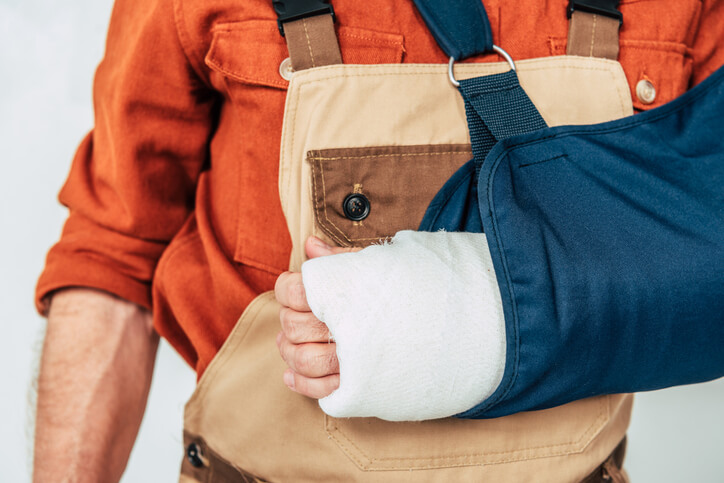The Most Common Car Accident Injuries in New York
- January 27, 2020
- By Gerard Devita


The impact of a car accident can easily cause major injuries. Accident victims often end up in the Emergency Room, and many are recommended to stay in the hospital for monitoring and treatment. Some accident victims have to undergo major surgery. An unlucky few die as a result of their injuries.
In the state of New York, there is an average of 1,098 deaths every year that result from crash injuries. There are also 136, 913 emergency room visits and 12,093 hospitalizations annually, on average. Motor vehicle crashes were the third-highest cause for both injury-related hospitalizations and deaths in New York City from 2012 to 2014.
Collectively, in 2014, people in the state spent $308.8 million on crash injury-related emergency department charges and nearly $500 million on hospitalization charges. Many injury victims had to get the help of a Long Island car accident lawyer to recover the costs of their medical treatment and other accident-related expenses through a personal injury claim.
Why are car accidents in New York so costly and so deadly? It has to do with the types of injuries they cause, which can be severe and difficult to treat.
The following are the 6 most common types of injuries a person can expect to see after a serious New York car accident.
Spinal Cord Injury
Motor vehicle crashes are the top cause of spinal cord injuries, according to the National Spinal Cord Injury Statistical Center.
A spinal cord injury involves trauma to the bones that make up the spine, the connective tissues that keep them together, or the vital nerves that run through them.
Spinal trauma is often accompanied by swelling, which can place pressure upon sensitive nerves traveling through the back. With enough pressure, the accident victim can experience nerve system dysfunction, causing tingling, numbness, or difficulty controlling motor skills. Some spinal cord injuries lead to such severe nerve damage that the patient may be partially or totally paralyzed.
Even minor spinal cord injuries can lead to a painful recovery for accident victims. Crash forces ]put a large amount of pressure on the spine, which can cause the cushiony discs that sit between vertebrae to bulge or rupture. Bulging/herniated discs are extremely painful, difficult to treat, take a long time to heal, and can result in significant impairment of movement — sometimes permanently.
Head Injury (TBI)
Blows to the head can lead to a serious medical condition called a concussion or traumatic brain injury (TBI). A TBI disrupts the normal functioning of the brain. Major crash injuries lead to brain swelling, which can cause brain damage and possible impairments.
Patients who have a possible head injury have to be examined and monitored. Their condition may appear fine at first, only to deteriorate over time. Prompt treatment is crucial to prevent permanent negative effects.
Motor vehicle collisions are the second-leading cause of TBI-related hospitalization, according to the CDC.
Neck, Shoulder, and Soft Tissue Injuries
During a crash, people inside the vehicle will get violently jolted around. The sudden impact of a collision adds all of this unexpected stress to our spine, shoulders, and especially our neck. Our heads weigh around 11 pounds, but holding our neck at harsher angles can make it feel more like 60 lbs to our spines.
Violent head, neck, and shoulder movements can lead to soft tissue damage. This type of injury to muscles, nerves, or ligaments can be hard to pinpoint. For instance, it can cause a vague pain during certain head movements. The pain can last for days and have limited options for treatment.
Severe damage to soft tissues in the neck is called “whiplash.” It can result in neck pain as well as headaches, stiffness, dizziness, blurred vision, difficulty sleeping and even tingling or numbness in the arms.
Fractures
Our bones are only so tough, and they can easily get broken during a collision. Car accident fractures most commonly happen in sensitive areas, like our wrists, ankles, shoulders, legs, and arms. Collarbones are frequently fractured during a crash, as are rib bones — both of which cannot be set with a cast.
Knee injuries are common when car accident victims are struck from the side or during a small front overlap. Both can cause the vehicle to smash up into the driver or front passenger’s legs, often colliding with their protruding knee.
Major car accident fractures like a femur break (your thighbone) can require surgery. They’ll take months to fully heal, and they can lead to many months of rehabilitative physical therapy.
Because accidents can be unpredictable, some otherwise uncommon fractures can result. For instance, facial bone fractures are usually rare outside of violent attacks, but 14.5% of facial fractures happen because of car accidents.
Internal Injuries
Internal injuries can happen during a car accident when an occupant is either struck by objects or subjected to strong impact forces.
Objects that impale crash victims can cause damage to soft tissues and major organs.
However, you don’t have to be physically struck with anything to have an internal organ injury. If your body is subjected to enough force or pushed in a certain unnatural way, your internal organs can get damaged, bruised, or even ruptured. Seat belts are a major cause of stomach injuries, for instance, as well as hernias.
Some internal injuries have subtle symptoms that may not become obvious until days after the wreck. Internal bleeding can be hard to detect, for example. For this reason, car accident victims should always receive a full examination after their accident to rule out any possible health emergencies.
Cuts, Scrapes, Bruises, and Burns
Broken glass, flying objects, abrasions (road rash), and bruises can all easily happen in a car accident. Some objects can pierce the skin, leading to a deep laceration or an impalement that leaves the object stuck in the person. Rubbing hard against the seat, seat belt, dashboard materials, or sometimes even the road during a crash can cause major abrasions — even up to the point of needing skin grafts. Burns can also happen when fuel or batteries ignite after a collision.
Minor injuries sustained during a car accident need immediate treatment. Receiving prompt medical attention is vital to prevent complications. All wounds require first aid to stop bleeding and prevent infection. Some wounds may require stitches to fully heal.
Paying for the Costs of These Injuries Can Be Hard Without the Help of a Long Island Car Accident Lawyer
Your personal injury protection (PIP) coverage (also called “No Fault” insurance) is supposed to provide up to $50,000 for your treatment and other expenses in New York, but getting a fair settlement as compensation for your injuries above medical expenses from the insurance companies can be difficult. You may have serious injuries or treatment costs that exceed $50,000, forcing you to look elsewhere for compensation.
A Long Island car accident attorney can help you file a strong claim and negotiate with insurers. Hiring a lawyer gives you someone who will fight on your behalf. When an accident leads to serious injuries and was caused by someone else, your attorney can help you file a third-party bodily injury liability claim to obtain the maximum amount of compensation available from the at-fault driver’s insurance.
We at Carner & DeVita know that paying for the costs of injuries like these can be tough, even downright scary. We want to help you explore all of your options and fight for the most compensation you can possibly get.
If you were hurt in a car accident in New York, call us now to get a 100% free case evaluation from one of our Long Island personal injury lawyers. Your attorney will tell you about your legal rights and can help you start making moves to claim all of your injury losses.
Call (631) 543-7070 or contact us online to schedule your free, no-obligation appointment today.
Have question?
Contact us today!
